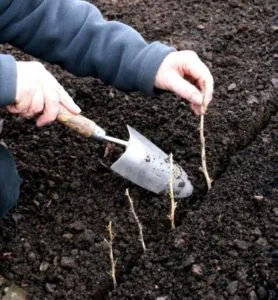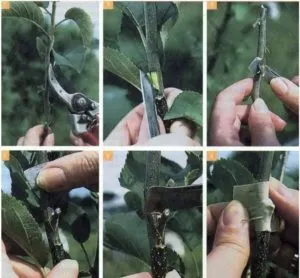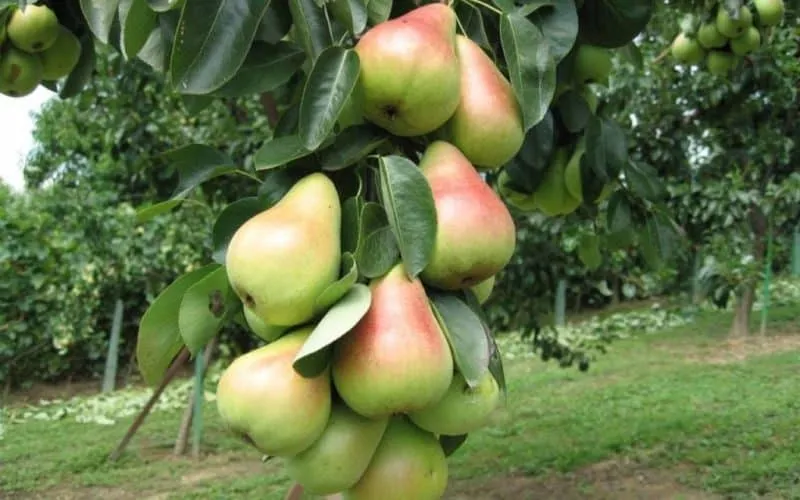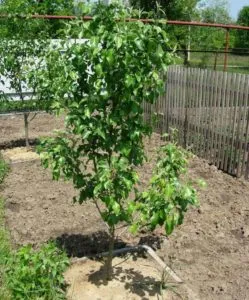Propagating pear trees in the garden is an engaging yet labour-intensive task. Timing is crucial — starting too early or too late may prevent the tree from taking root. The choice of suitable varieties depends on the European country where the transplant will occur. Additionally, each variety has its own characteristics, advantages, and disadvantages. Learn how to propagate (take cuttings from) a pear tree in summer from our article.
Table of contents
Can You Propagate a Pear Tree from Cuttings in Summer?
In summer, pear trees are propagated through cuttings. Trees grown this way begin flowering in their fifth or sixth year of growth.
Advantages and Disadvantages of the Method
One advantage of summer pear cuttings is that they can root before severe cold sets in, though experienced gardeners note that trees propagated this way are less frost-resistant than those grown through grafting.
Other benefits:
- such plants tolerate high groundwater levels better;
- they can be propagated easily using various methods;
- they do not require grafting.
Cuttings allow for the cultivation of high-quality, self-rooted fruit trees. The process itself is straightforward — even an inexperienced gardener can succeed by following the rules.
However, this method also has drawbacks:
- in summer heat, cuttings need protection from direct sunlight;
- they yield average or modest harvests compared to trees grown by other methods;
- they do not bear fruit every year;
- there is no guarantee the cutting will take root.
Optimal Timing for Summer Propagation
In Central Europe, pear cuttings are taken between June 12–15 and July 14–15.
In Northern Europe, the process should begin around June 20 and end by July 10. These deadlines are critical, as late cuttings may not establish properly.
Best Days for Propagation
Cuttings are best taken in the morning or on overcast days when the branches contain the most moisture, improving rooting success.
Some gardeners follow the Lunar Calendar, planting cuttings during the waxing moon for better growth.
Suitable Pear Varieties
Recommended pear varieties for this method:
- Williams’ Bon Chrétien;
- Conference;
- Doyenné du Comice;
- Beurré Bosc.
Selecting and Preparing Cuttings
Branches are cut in the morning. The length depends on internode spacing — cuttings with short internodes should have 3 nodes, while those with long internodes need 2. Avoid thin branches, as they root poorly.
Hardwood cuttings are used for autumn propagation, taken after leaf fall when sap movement has stopped.
Softwood cuttings are taken in summer. Make a clean, angled cut just below a bud, then a second horizontal cut above the top bud.
Air layering is another method. In early June, select a healthy branch and remove a ring of bark. Disinfect the cut with a fungicide and apply a rooting hormone. Split a plastic cup in half, fill it with soil, and attach it to the wound. Wrap in white cloth to prevent overheating. Keep the soil moist.
After a month, roots (~10 cm long) will form. Detach the cutting and plant it in prepared soil.
Rooting Methods
Place cuttings in a wooden box with a bottom layer of river sand and a top layer (≥30 cm) of nutrient-rich soil. Mist lightly.
Note: Insert cuttings deep enough that only 2 buds remain above the soil.
Cover the box with plastic to create a greenhouse effect. Ventilate weekly and remove the cover after two weeks.
Planting Rooted Cuttings
By mid-September, transplant cuttings with established roots into a greenhouse. Carefully lift them with their soil to avoid root damage.
Keep greenhouse soil moist in dry autumns and ensure proper ventilation. Before winter, mulch with sawdust, peat, or spruce branches.
Grow pears in the greenhouse for 3 years before transplanting to their permanent location.
Variety-Specific Propagation

Columnar pears are propagated by grafting onto wild rootstocks or rooting softwood cuttings (harvested in autumn). They require annual pruning of side branches.
Wild European pear or Pyrus ussuriensis serve as common rootstocks. Autumn cuttings work well for varieties like ‘Concorde’ and ‘Conference’.
Regional Considerations
Pears thrive in warmer climates, making them ideal for Southern Europe.
In France, for example, varieties with different ripening periods are cultivated. Pears grow best in well-drained loamy soils.
Grafting onto mountain ash is practiced in Central Europe where colder temperatures limit other rootstock options.
Ongoing Care

In spring, saplings enter active growth. Maintain consistent soil moisture through regular watering.
Create a circular trench around the base for targeted watering. Evening misting is particularly beneficial.
Use organic or mineral fertilisers. In August, supplement with wood ash and phosphates.
Treat saplings with antifungal agents. Winter protection includes mulching and wrapping the trunk with horticultural fleece or burlap.
Plant green manure (e.g., clover) around young trees to improve soil structure and nutrient availability.
Expert Tips
Follow these recommendations for healthy, productive trees:
- store young plants in a cellar over winter;
- prune only after transplanting to a permanent spot;
- provide diffused light in greenhouses;
- take cuttings from the lower crown — they grow more vigorously.
Conclusion
Pear propagation is a meticulous process requiring careful attention — from proper cutting techniques to ongoing tree care.
By applying these methods, you can cultivate strong pear trees. Consistent watering and fertilisation will ensure success in this rewarding endeavour.







